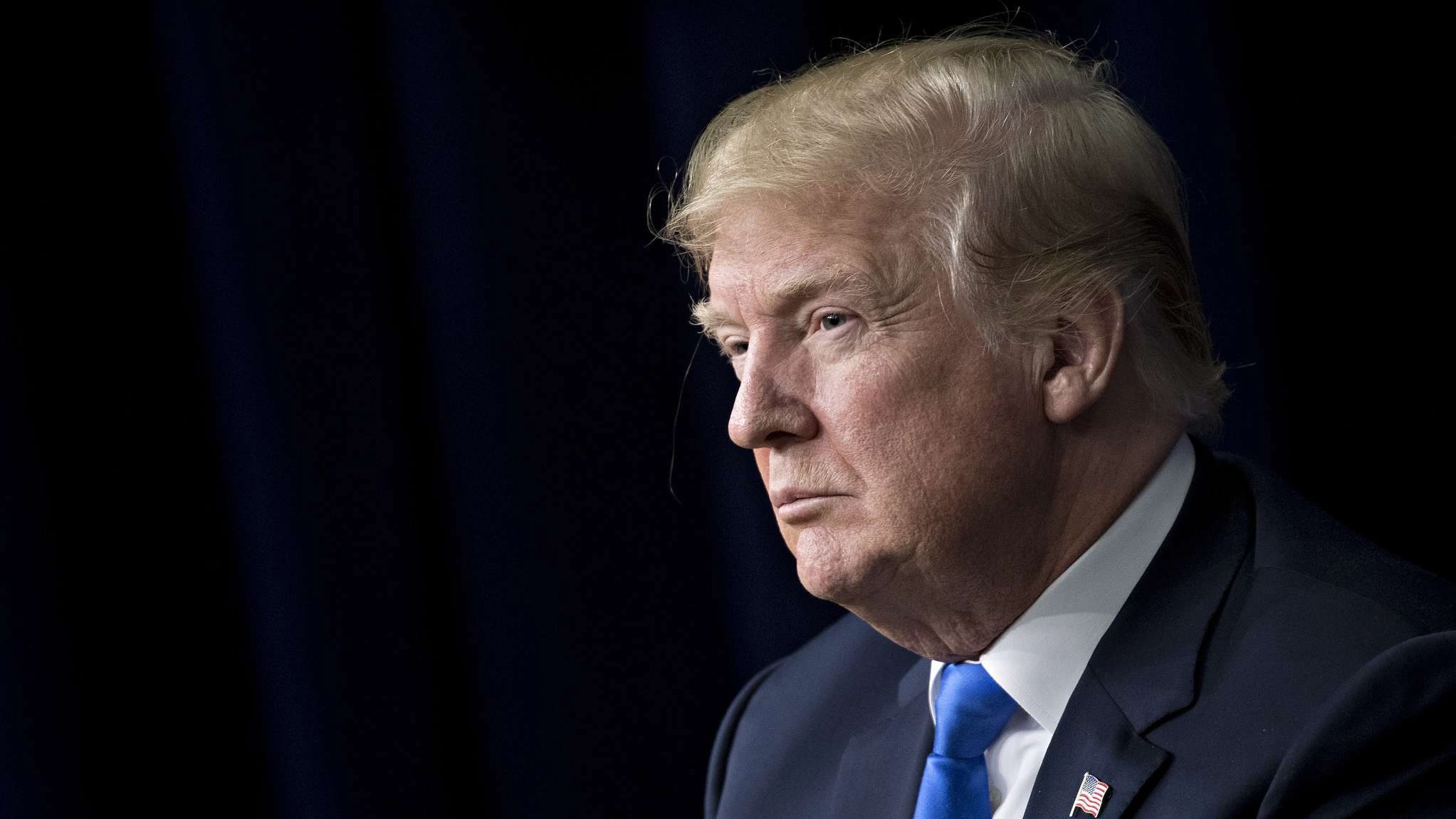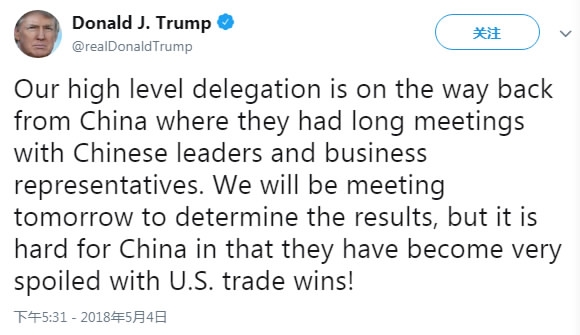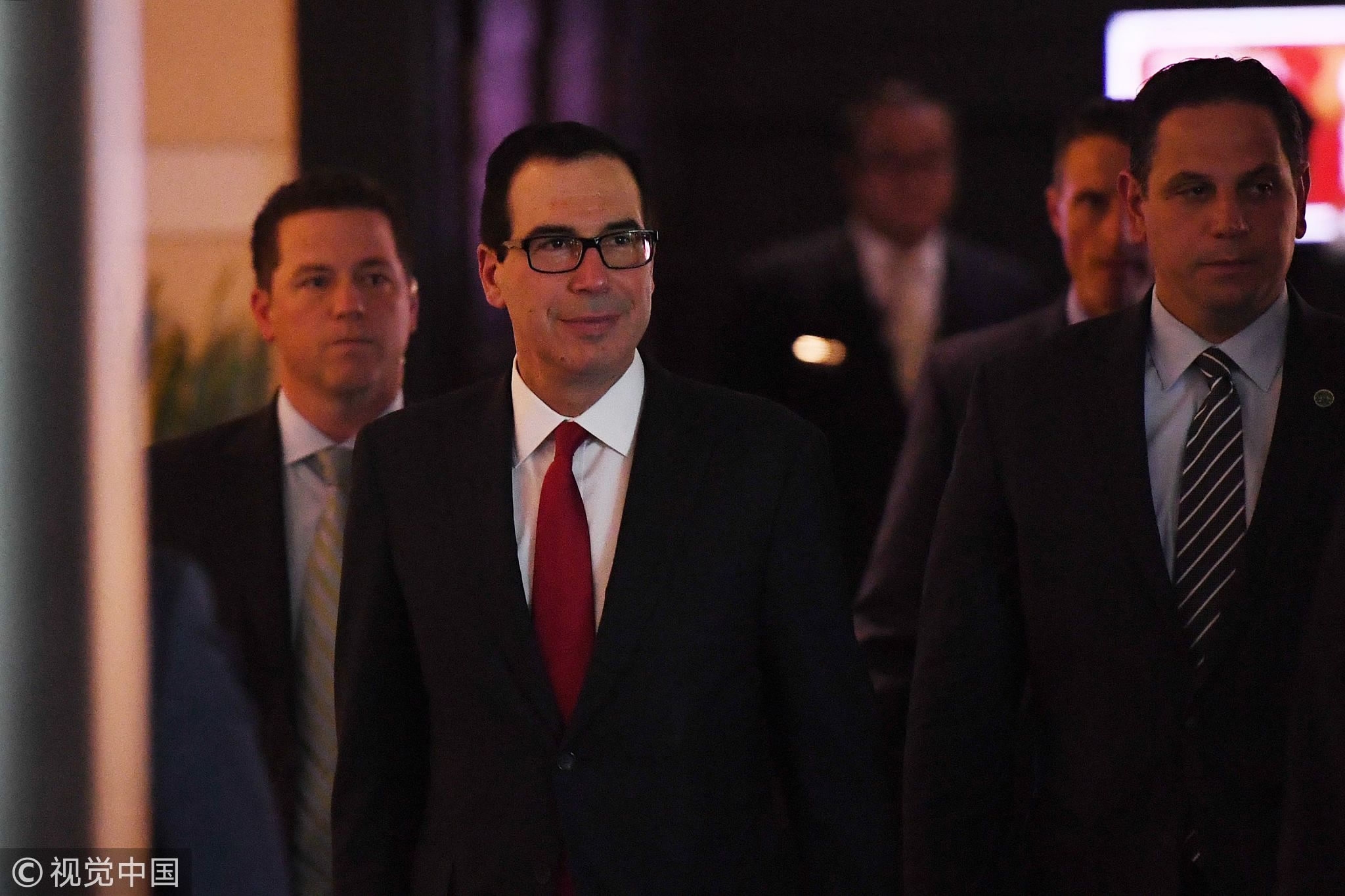The recent high-level trade talks between the US and China ended in Beijing without a joint statement. Although sketch reports by the Chinese media indicated that "there are still big differences on some issues” and that both sides agreed to establish a "working mechanism" to continue talks, the White House called the discussions "frank" with no mention of continuing the negotiations.

Meanwhile, US President Donald Trump tweeted that China is "very spoiled" by trade wins over America as the US business delegation headed back home. Fox Business quoted Trump as saying there's a need to "bring fairness to trade between the US and China" and his administration will be "doing something one way or the other."

US President Donald Trump tweets over US-China trade talks.
What Trump will do remains to be seen, but the aim is quite clear – namely to cut the deficit in the US' trade with China. For months, Trump has been threatening massive tariffs on Chinese imports if China fails to increase imports from the US and to protect intellectual property rights.
China has recently announced reform measures to further open its market, such as lifting foreign ownership restrictions for automakers, allowing foreign investors to take controlling stakes in financial firms and strengthening protections for intellectual property rights.
But according to Bloomberg News, a list of US demands presented at the talks in Beijing showed these steps fell far short of expectations in Washington. The demands included cutting China's trade surplus with the US by at least 200 billion US dollars by the end of 2020, lowering all tariffs to match US levels, eliminating technology transfer practices, and cutting off state support for some Chinese industries.
It’s common sense that the best treatment of a disease is to find the root cause and apply medicine accordingly. Of course, it requires the expertise and experience of a good doctor to diagnose the real cause and give the right prescription. Only a quack tries to cure a disease by addressing the symptoms only – unfortunately, sometimes people are fooled by this “quick relief” of problems.

US Treasury Secretary Steven Mnuchin (C) walks through a hotel lobby as he heads to the US embassy in Beijing on May 3, 2018. (Photo: VCG)
In my opinion, the trade deficits between China and the United States are much more complicated than President Trump thought. To cut the deficit by increasing tariffs on imports from China is not the right remedy for the problem. To impose restrictions on exporting US high-tech products to China or block Chinese investments into the US will only worsen the problem. To launch a trade war against China is a losing game: it will not only hurt China and the United States, but many other countries as well.
In this case, open-minded and sincere negotiations, just like the consultation of doctors, are needed to identify the root cause of the deficits. It may take a little bit longer time and more patience, but it is the best way to solve the problem.
(With a doctoral degree in communications from the Communication University of China, the author has been working in the field of international journalism for 30 years. The article reflects the author's opinion, and not necessarily the view of CGTN.)


